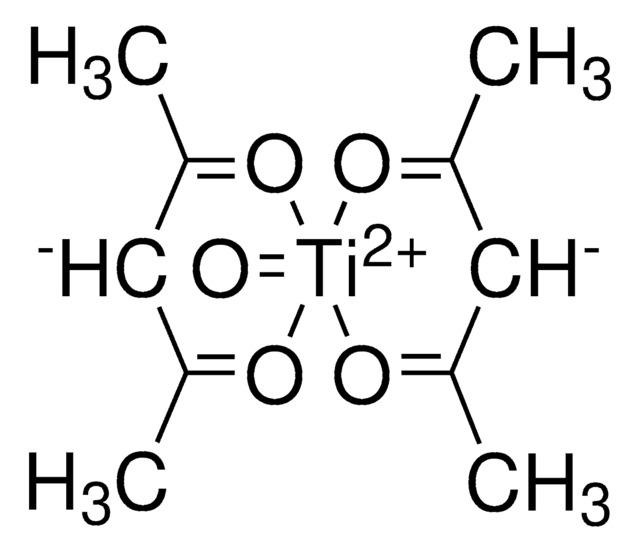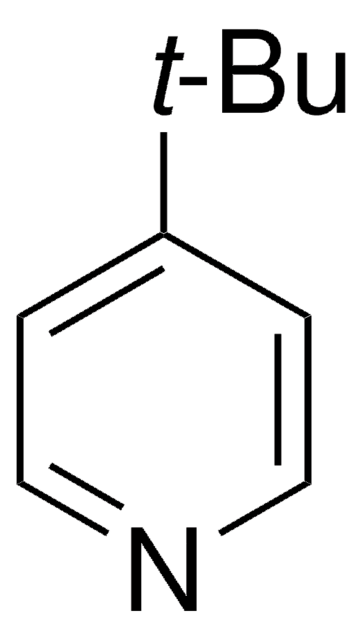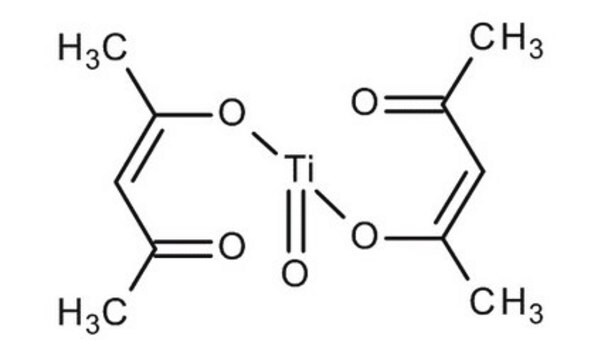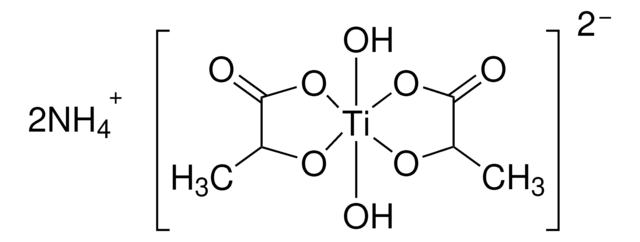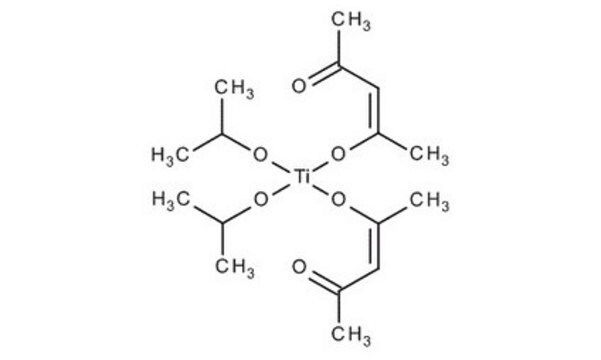Kluczowe dokumenty
325252
Titanium diisopropoxide bis(acetylacetonate)
75 wt. % in isopropanol
Synonim(y):
Diisopropoxytitanium bis(acetylacetonate) solution, TYZOR® AA organic titanate, Ti(acac)2OiPr2
About This Item
Polecane produkty
Formularz
solution
Poziom jakości
skład
Ti, 9-10.5% gravimetric
przydatność reakcji
core: titanium
reagent type: catalyst
stężenie
75 wt. % in isopropanol
współczynnik refrakcji
n20/D 1.4935
gęstość
0.995 g/mL at 25 °C
ciąg SMILES
CC(C)O[Ti](OC(C)C)(O\C(C)=C\C(C)=O)O\C(C)=C\C(C)=O
InChI
1S/2C5H8O2.2C3H7O.Ti/c2*1-4(6)3-5(2)7;2*1-3(2)4;/h2*3,6H,1-2H3;2*3H,1-2H3;/q;;2*-1;+4/p-2/b2*4-3+;;;
Klucz InChI
OVSGBKZKXUMMHS-VVDZMTNVSA-L
Szukasz podobnych produktów? Odwiedź Przewodnik dotyczący porównywania produktów
Zastosowanie
Informacje prawne
Hasło ostrzegawcze
Danger
Zwroty wskazujące rodzaj zagrożenia
Zwroty wskazujące środki ostrożności
Klasyfikacja zagrożeń
Eye Dam. 1 - Flam. Liq. 2 - STOT SE 3
Organy docelowe
Central nervous system
Kod klasy składowania
3 - Flammable liquids
Klasa zagrożenia wodnego (WGK)
WGK 3
Temperatura zapłonu (°F)
53.6 °F - closed cup
Temperatura zapłonu (°C)
12 °C - closed cup
Środki ochrony indywidualnej
Eyeshields, Faceshields, Gloves, type ABEK (EN14387) respirator filter
Wybierz jedną z najnowszych wersji:
Masz już ten produkt?
Dokumenty związane z niedawno zakupionymi produktami zostały zamieszczone w Bibliotece dokumentów.
Klienci oglądali również te produkty
Produkty
New methods for materials fabrication at the micro- and nanoscale will drive scientific and technological advances in areas of materials science, chemistry, physics, and biology. The broad diversity of potentially relevant materials, length scales, and architectures underscores the need for flexible patterning approaches. One important example is the fabrication of 3D periodic structures composed of colloidal, polymeric, or semiconductor5 materials.
Titanium dioxide (TiO2) is an important n-type semiconducting material that shows interesting characteristics such as photoswitchable surface wettability, high photocatalytic activity, bistable electrical resistance states and high electron drift mobility.
Kilka monowarstw osadzania warstw atomowych (ALD) na powierzchniach i interfejsach do zastosowań energetycznych
Few Monolayer Atomic Layer Deposition (ALD) on Surfaces and Interfaces for Energy Applications
Global Trade Item Number
| SKU | GTIN |
|---|---|
| 325252-500ML | 4061838253231 |
| 325252-5ML | |
| 325252-100G | |
| 325252-100ML | 4061826712801 |
| 325252-500G |
Nasz zespół naukowców ma doświadczenie we wszystkich obszarach badań, w tym w naukach przyrodniczych, materiałoznawstwie, syntezie chemicznej, chromatografii, analityce i wielu innych dziedzinach.
Skontaktuj się z zespołem ds. pomocy technicznej

